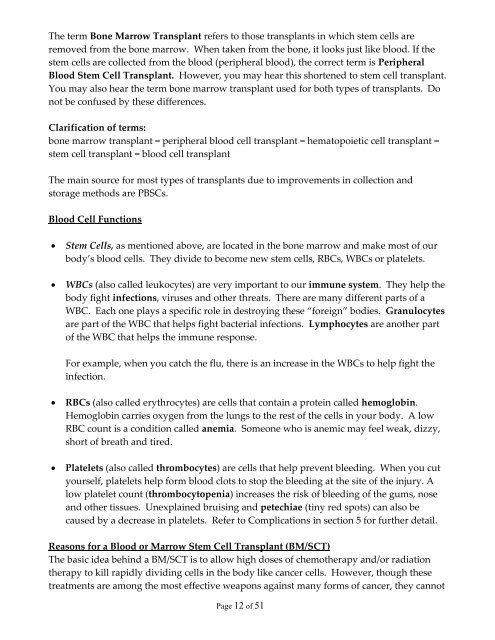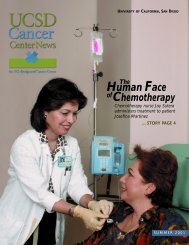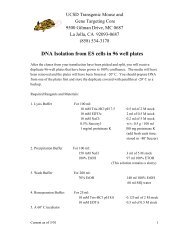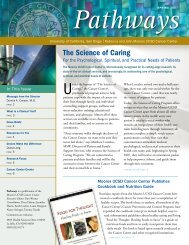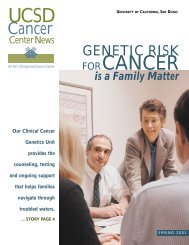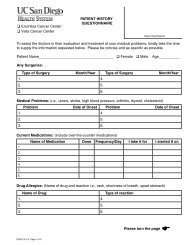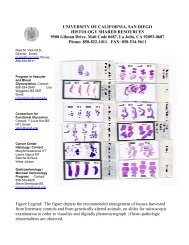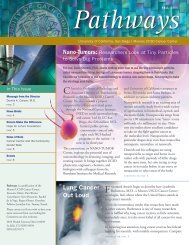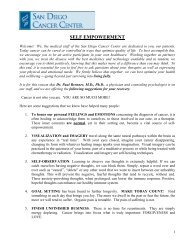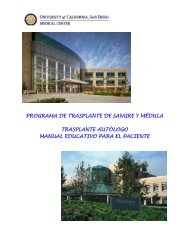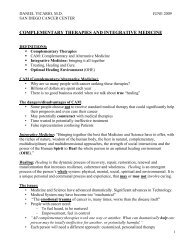Autologous Transplant Patient Education Manual - Moores Cancer ...
Autologous Transplant Patient Education Manual - Moores Cancer ...
Autologous Transplant Patient Education Manual - Moores Cancer ...
Create successful ePaper yourself
Turn your PDF publications into a flip-book with our unique Google optimized e-Paper software.
The term Bone Marrow <strong>Transplant</strong> refers to those transplants in which stem cells are<br />
removed from the bone marrow. When taken from the bone, it looks just like blood. If the<br />
stem cells are collected from the blood (peripheral blood), the correct term is Peripheral<br />
Blood Stem Cell <strong>Transplant</strong>. However, you may hear this shortened to stem cell transplant.<br />
You may also hear the term bone marrow transplant used for both types of transplants. Do<br />
not be confused by these differences.<br />
Clarification of terms:<br />
bone marrow transplant = peripheral blood cell transplant = hematopoietic cell transplant =<br />
stem cell transplant = blood cell transplant<br />
The main source for most types of transplants due to improvements in collection and<br />
storage methods are PBSCs.<br />
Blood Cell Functions<br />
<br />
<br />
Stem Cells, as mentioned above, are located in the bone marrow and make most of our<br />
body’s blood cells. They divide to become new stem cells, RBCs, WBCs or platelets.<br />
WBCs (also called leukocytes) are very important to our immune system. They help the<br />
body fight infections, viruses and other threats. There are many different parts of a<br />
WBC. Each one plays a specific role in destroying these “foreign” bodies. Granulocytes<br />
are part of the WBC that helps fight bacterial infections. Lymphocytes are another part<br />
of the WBC that helps the immune response.<br />
For example, when you catch the flu, there is an increase in the WBCs to help fight the<br />
infection.<br />
<br />
<br />
RBCs (also called erythrocytes) are cells that contain a protein called hemoglobin.<br />
Hemoglobin carries oxygen from the lungs to the rest of the cells in your body. A low<br />
RBC count is a condition called anemia. Someone who is anemic may feel weak, dizzy,<br />
short of breath and tired.<br />
Platelets (also called thrombocytes) are cells that help prevent bleeding. When you cut<br />
yourself, platelets help form blood clots to stop the bleeding at the site of the injury. A<br />
low platelet count (thrombocytopenia) increases the risk of bleeding of the gums, nose<br />
and other tissues. Unexplained bruising and petechiae (tiny red spots) can also be<br />
caused by a decrease in platelets. Refer to Complications in section 5 for further detail.<br />
Reasons for a Blood or Marrow Stem Cell <strong>Transplant</strong> (BM/SCT)<br />
The basic idea behind a BM/SCT is to allow high doses of chemotherapy and/or radiation<br />
therapy to kill rapidly dividing cells in the body like cancer cells. However, though these<br />
treatments are among the most effective weapons against many forms of cancer, they cannot<br />
Page 12 of 51


